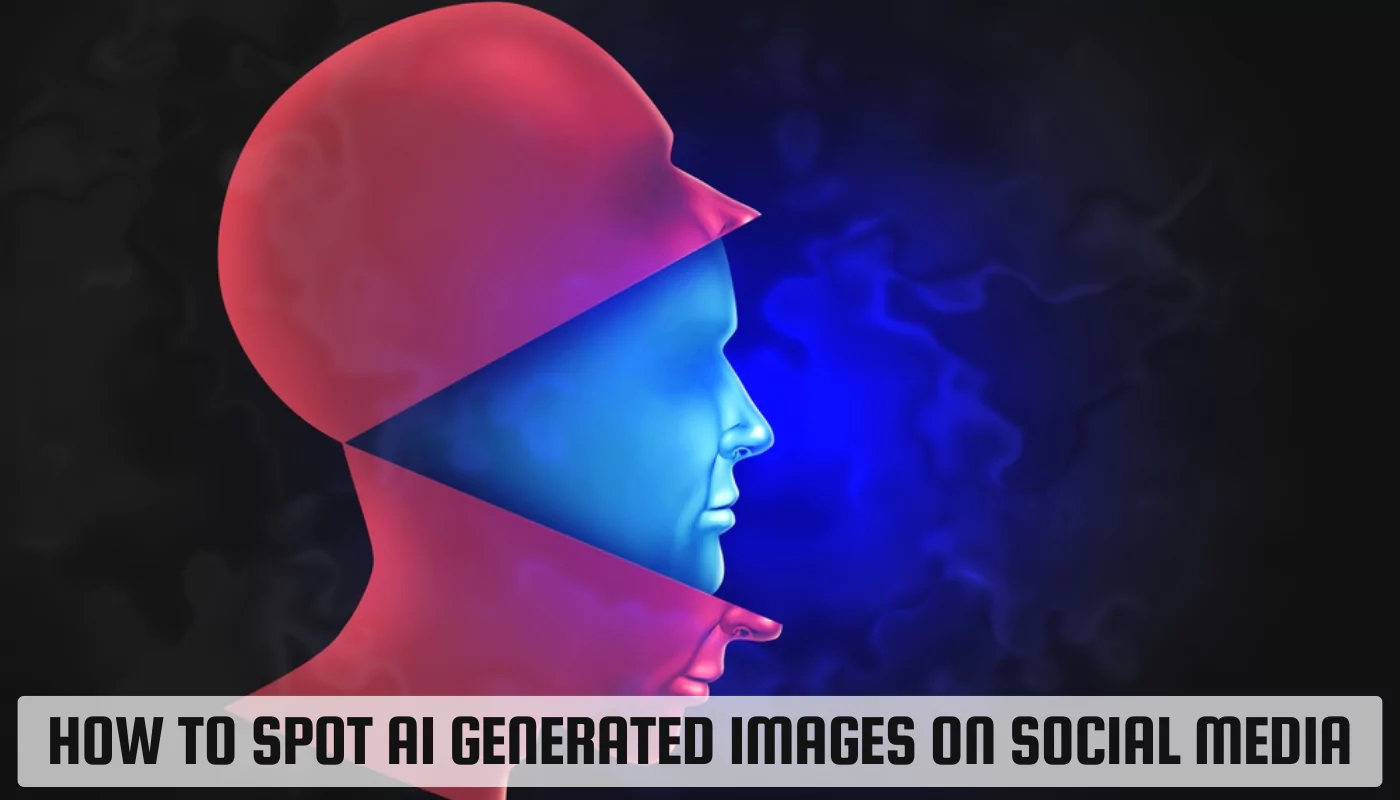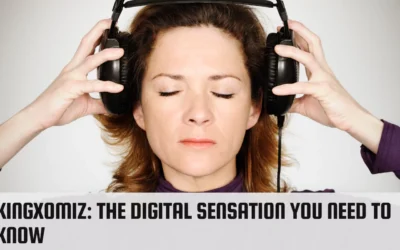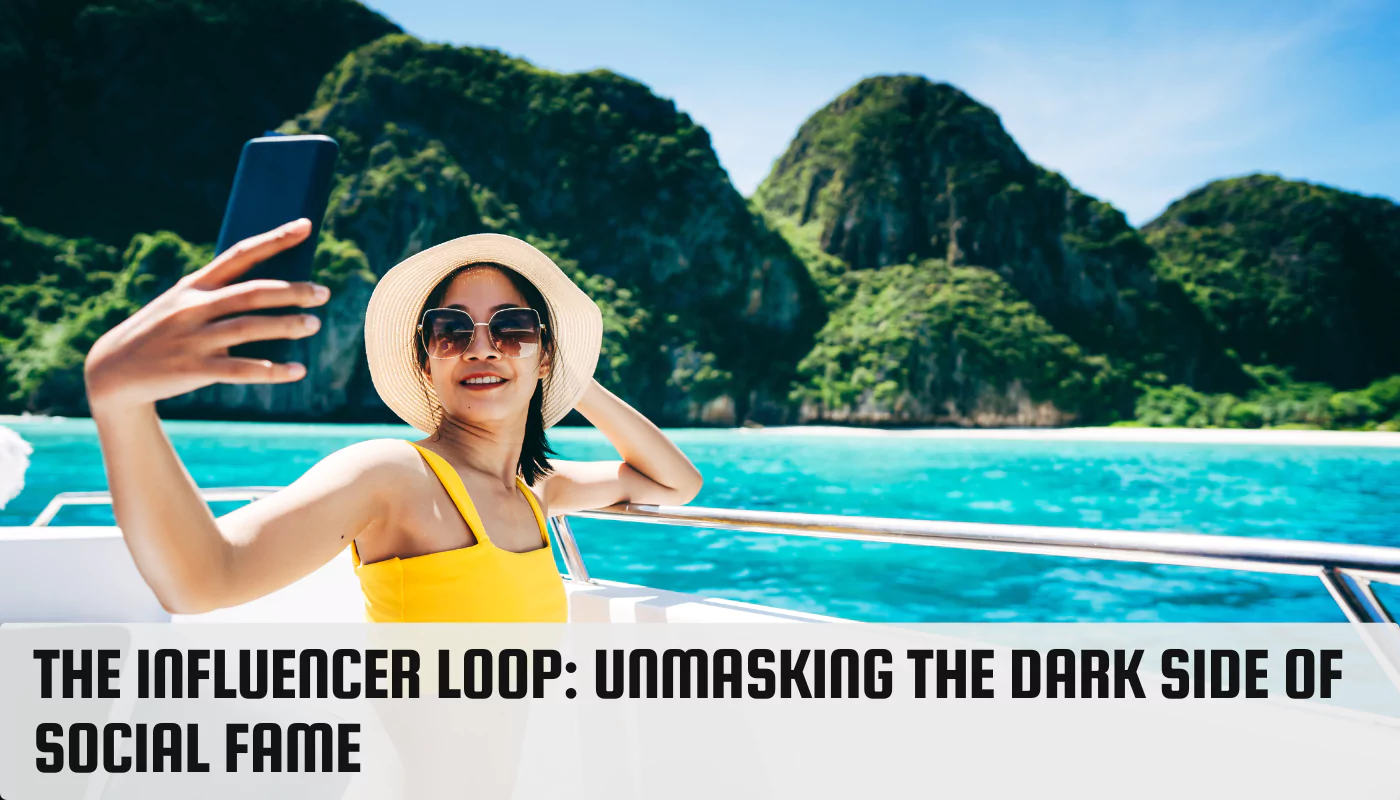How To Spot AI Generated Images on Social Media in 2024?

Spotting fake images on social media can be tricky. AI-generated images are getting better at mimicking real ones. This article shows you how to spot AI generated images on social media in 2024, offering easy tips and tools.
Keep reading to learn more!
Recognizing AI-Generated Images
To spot AI-generated images on social media, observe for unusual or inconsistent details. Also, pay attention to blurry or distorted features in the images you come across.
Look for unusual or inconsistent details
Spotting AI-generated images starts with paying attention to anomalies. An AI-generated image of Ryan Reynolds, for instance, revealed unnaturally shaped fingers – a clear sign of computer generation.
Other examples include abnormalities in tree branches and irregular spacing of buttons on clothing. These unusual attributes signal that an image might not be what it seems.
AI images may feature tangled arrangements of cables or other objects, highlighting the importance of examining details closely.
Keep an eye out for these inconsistencies. Unnatural features in photos offer clues that they were created by AI instead of captured through a camera lens. The key is detecting these irregularities, like the odd patterns in tree foliage or synthetic textures that just don’t sit right with reality.
Notice blurry or distorted features
AI images often trick the eye with their sharpness at first glance. Yet, a closer look reveals blurred edges and distorted features that don’t match up. These visual imperfections become clearer in areas where detail is crucial.
For example, a computergenerated image of Ariana Grande showed off this flaw by lacking facial texture.
Digital manipulation tries to blend foregrounds and backgrounds smoothly but falls short. AI-generated scenes may sport a well-defined subject against an unfocused setting, creating an unnatural appearance.
This contrast between clarity and fuzziness serves as a red flag indicating artificial creation.
Check for a lack of realistic texture or depth
AI-generated images often miss the mark on realistic texture or depth. They might appear too perfect, with an airbrushed look that real photos rarely have. This flaw became evident in a computer-generated “Where’s Waldo” puzzle, which lacked the complexity and depth of real images.
These synthetic images also tend to skip over natural flaws or unappealing elements, presenting an unrealistically flawless view.
Real photographs capture life’s imperfections—blemishes on skin, uneven textures on materials, and the intricate layers of landscapes. In contrast, digital art created by AI misses these nuances.
Without these details, simulated images carry an unrealistic appearance that can sometimes be easy to spot if you know what to look for.
Tools and Techniques to Identify AI Images
To identify AI-generated images, you can utilize a reverse-image search or employ AI image detection software. These tools enable users to analyze images and check for authenticity, effectively mitigating the spread of misinformation on social media.
Use a Reverse-Image Search
Performing a reverse image search can help determine if an image is AI-generated by checking its online presence. AI images usually have fewer online appearances. Consider the credibility of the website hosting the image.
- Conduct a reverse-image search using popular platforms such as Google Images, TinEye, or Bing Image Search.
- Review the search results to assess how widely and where else the image appears across the web.
- Evaluate the frequency of appearance and variations in contexts to gauge its authenticity.
- Verify the original source and context of the image to establish its legitimacy.
- Cross-check with reputable sources or fact-checking websites for additional validation.
This method allows users to identify whether an image has been generated by AI technology and determine its authenticity before sharing it on social media or other platforms, contributing to media literacy principles and combatting the spread of false information online.
Employ AI image detection software
AI image detection software is a valuable tool in identifying AI-generated images due to its advanced capabilities. It offers precise recognition by employing complex algorithms and machine learning techniques. Here are the methods and aspects that highlight the efficiency of AI image detection software:
- Advanced Algorithms: The software utilizes cutting-edge algorithms to analyze visual content, enabling it to identify patterns and characteristics associated with AI-generated visuals.
- Machine Learning Integration: By integrating machine learning, the software continuously improves its ability to differentiate between authentic and AI-generated images based on evolving data sets.
- Multi-Level Image Analysis: It conducts multi-level analysis, scrutinizing various components such as pixel distribution, color gradients, and structural anomalies to ascertain the authenticity of images.
- Deep Learning Capabilities: Leveraging deep learning technology, the software can delve into intricate details within an image, detecting subtle inconsistencies that may indicate AI generation.
- Real-Time Detection: This software operates in real time, swiftly processing vast quantities of visual content across social media platforms to promptly flag potentially AI-generated images for further review.
- Constant Updates: The continuous updates ensure that the software remains adaptive to emerging trends in AI-generated visuals while refining its detection accuracy over time.
Analyze with the “Content Credentials” tool
The “Content Credentials” tool offers metadata for image verification, aiding in scrutinizing authenticity. It also provides the capability for authentication verification and helps identify visual inconsistencies or imperfections within images.
This tool contributes to the thorough analysis of image authenticity, essential for recognizing AI-generated content on social media.
Practical Tips for Everyday Users
Empower yourself and others with media literacy principles to discern real from AI-generated images. Read more on our blog for detailed insights.
Educate on media literacy principles
Media literacy is vital for understanding and evaluating images encountered on social media. By developing critical thinking skills and digital literacy, users can better analyze visual content for authenticity and credibility.
This includes using cognitive evaluation to assess image coherence and recognizing potential risks associated with AI-generated images, particularly for older relatives who may be more vulnerable online.
Educating individuals on media literacy principles empowers them to navigate the challenges of the constantly changing world of online safety awareness and make informed decisions about the content they engage with.
Moving forward, let’s explore practical tips for everyday users in assessing image credibility and reliability.
Apply the S-I-F-T method to assess images
- Source: Confirm the origin and credibility of the image. Evaluate whether the source is dependable and reputable, taking into account factors such as reputation, expertise, and reliability.
- Image: Examine the genuineness of the image by analyzing its details, including uncommon elements, inconsistencies in content, or any indications of manipulation or alteration.
- Manipulation Potential: Evaluate the level of difficulty associated with creating a fabricated image, taking into consideration the availability of advanced editing tools or technology for image alteration.
- Reliability Assessment: Assess the overall reliability of the image’s source and determine if it corresponds with reliable and authentic sources based on media literacy principles.
- Authenticity Analysis: Employ techniques to verify factual accuracy, demonstrating a thorough approach to uncovering any potential disparities or deceptive aspects within the image’s content.
The Role of Social Media Platforms
Social media platforms play a crucial role in tackling the spread of AI-generated images; be sure to read more for valuable insights into this evolving landscape.
Labeling AI-generated images on platforms like Facebook and Instagram
Social media platforms are including policies to label AI-generated images, aiding users in identifying AI content. Platforms are striving to comply with moderation policies for AI content, fostering a transparent online environment.
This effort is vital in improving user recognition of AI content and ensuring adherence to social media guidelines. Moreover, tagging AI-generated images can assist in identifying artificial intelligence-generated images, contributing to a more regulated platform for users.
Platform policies on AI-generated content
As social media platforms face the challenge of managing AI-generated content, they are working to develop and implement policies to address the risks associated with such material.
These policies aim to tackle concerns related to coordinated inauthentic behavior, misinformation, deep learning, synthetic media, manipulated media, and malicious activities. Key focus areas include handling potential threats from political propaganda and deepfake content through leveraging algorithms for content moderation.
The platforms are striving to establish guidelines that effectively curtail the spread of AI-generated images while upholding transparency and authenticity.
The development of these platform policies is crucial considering the potential impact on user trust and overall credibility in digital spaces. By addressing these concerns proactively, social media entities can actively contribute to mitigating the harmful influence of AI-generated content on their platforms.
Conclusion
Spotting AI-generated images on social media in 2024 requires a discerning eye. Look for unusual details, check the texture and depth, and notice any blurriness. Use tools like reverse image search and AI detection software to identify fake content.
Educating others on recognizing AI-generated images is crucial to combat misinformation. Social media platforms need clear labeling of such content to protect users from fake images.
With these proactive measures, we can stay vigilant against the rising tide of AI-generated deception on social platforms.
FAQs
1. How can I tell if an image on social media is AI-generated?
To spot AI-generated images, look for unusual details or odd textures. These images may lack realistic features like shadows or reflections.
2. What tools can help identify AI-generated images?
There are online tools designed to analyze images and detect signs of AI generation. Using these tools can make it easier to confirm the image’s origin.
3. Why is it important to recognize AI-generated images?
Recognizing AI-generated images helps prevent misinformation and deception online. It ensures that you understand what you are viewing on social media platforms.
4. Are there specific trends in 2024 for spotting AI-created content?
In 2024, more sophisticated techniques will be used to create fake visuals. Being aware of common patterns, such as inconsistent lighting or unnatural poses, will help you spot them effectively.









